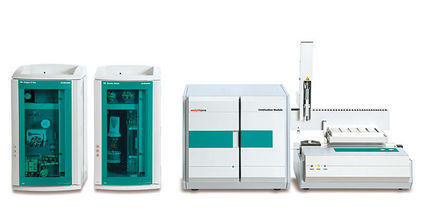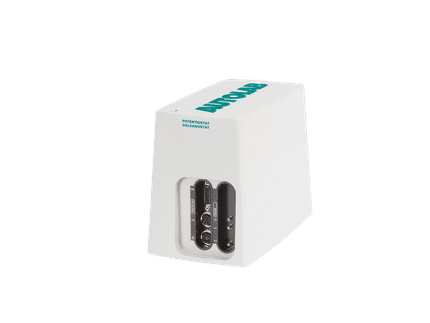| Interleukin 6 signal transducer (gp130, oncostatin M receptor)
|
|
|
| Gp130 crystal structure from PDB 1p9m.
|
| Available structures: 1bj8, 1bqu, 1i1r, 1p9m, 1pvh
|
| Identifiers
|
| Symbol(s)
| IL6ST; CD130; CDw130; GP130; GP130-RAPS; IL6R-beta
|
| External IDs
| OMIM: 600694 MGI: 96560 Homologene: 1645
|
| Gene Ontology
|
| Molecular Function:
| • receptor activity
• interleukin-6 receptor activity
• oncostatin-M receptor activity
• protein binding
|
| Cellular Component:
| • plasma membrane
• integral to plasma membrane
|
| Biological Process:
| • immune response
• cell surface receptor linked signal transduction
• positive regulation of cell proliferation
• regulation of Notch signaling pathway
|
|
| Orthologs
|
|
| Human
| Mouse
|
| Entrez
| 3572
| 16195
|
| Ensembl
| na
| ENSMUSG00000021756
|
| Uniprot
| na
| Q3TDT5
|
| Refseq
| NM_002184 (mRNA)
NP_002175 (protein)
| NM_010560 (mRNA)
NP_034690 (protein)
|
| Location
| na
| Chr 13: 113.58 - 113.63 Mb
|
| Pubmed search
| [1]
| [2]
|
Glycoprotein 130 (also known as gp130, IL6ST or CD130) is a transmembrane protein which is the founding member of the class of tall cytokine receptors. It forms one subunit of type I cytokine receptors within the IL-6 receptor family. It is often referred to as the common gp130 subunit, and is important for signal transduction following cytokine engagement. As with other type I cytokine receptors, gp130 possesses a WSXWS amino acid motif that ensures correct protein folding and ligand binding. It interacts with Janus kinases to elicit an intracellular signal following receptor interaction with its ligand. Structurally, gp130 is composed of five fibronectin type-III domains and one immunoglobulin-like C2-type (immunoglobulin-like) domain in its extracellular portion.[1][2]
Characteristics
The members of the IL-6 receptor family all complex with gp130 for signal transduction. For example, IL-6 binds to the IL-6 Receptor. The complex of these two proteins then associates with gp130. This complex of 3 proteins then homodimerizes to form a hexameric complex which can produce downstream signals.[3] There are many other proteins which associate with gp130, such as cardiotrophin 1 (CT-1), leukemia inhibitory factor (LIF), ciliary neurotrophic factor (CNTF), oncostatin M (OSM), and IL-11.[4] There are also several other proteins which have structural similarity to gp130 and contain the WSXWS motif and preserved cysteine residues. Members of this group include LIF-R, OSM-R, and G-CSF-R.
Loss of gp130
gp130 is an important part of many different types of signaling complexes. Inactivation of gp130 is lethal to mice.[5] Homozygous mice who are born show a number of defects including impaired development of the ventricular myocardium. Haematopoietic effects included reduced numbers of stem cells in the spleen and liver.
Signal Transduction
gp130 has no intrinsic tyrosine kinase activity. Instead, it is phosphorylated on tyrosine residues after complexing with other proteins. The phosphorylation leads to association with JAK/Tyk tyrosine kinases and STAT protein transcription factors.[6] In particular, STAT-3 is activated which leads to the activation of many downstream genes. Other pathways activated include RAS and MAPK signaling.
References
- ^ Hibi et al. (1990). "Molecular cloning and expression of an IL-6 signal transducer, gp130". Cell 63: 1149-1157.
- ^ Bravo et al (1998). "Crystal structure of a cytokine-binding region of gp130". EMBO J 17: 1665-1674.
- ^ Murakami M, Hibi M, Nakagawa N, Nakagawa T, Yasukawa K, Yamanishi K, Taga T, Kishimoto T (1993). "IL-6-induced homodimerization of gp130 and associated activation of a tyrosine kinase". Science 260: 1808-1810.
- ^ Kishimoto T, Akira S, Narazaki M, Taga T (1995). "Interleukin-6 family of cytokines and gp130". Blood 86: 1243-1254.
- ^ Yoshida K, Taga T, Saito M, Suematsu S, Kumanogoh A, Tanaka T, Fujiwara H, Hirata M, Yamagami T, Nakahata T, Hirabayashi T, Yoneda Y, Tanaka K, Wang W-Z, Mori C, Shiota K, Yoshida N, Kishimoto T (1996). "Targeted disruption of gp130, a common signal transducer for IL-6-family of cytokines, leads to myocardial and hematological disorders". Proc Natl Acad Sci 93: 407-411.
- ^ Kishimoto T, Taga T, Akira S (1994). "Cytokine signal transduction". Cell 76: 253-262.
Further reading
- Ip NY, Nye SH, Boulton TG, et al. (1992). "CNTF and LIF act on neuronal cells via shared signaling pathways that involve the IL-6 signal transducing receptor component gp130.". Cell 69 (7): 1121-32. PMID 1617725.
- Hibi M, Murakami M, Saito M, et al. (1991). "Molecular cloning and expression of an IL-6 signal transducer, gp130.". Cell 63 (6): 1149-57. PMID 2261637.
- Taga T, Hibi M, Hirata Y, et al. (1989). "Interleukin-6 triggers the association of its receptor with a possible signal transducer, gp130.". Cell 58 (3): 573-81. PMID 2788034.
- Rodriguez C, Grosgeorge J, Nguyen VC, et al. (1995). "Human gp130 transducer chain gene (IL6ST) is localized to chromosome band 5q11 and possesses a pseudogene on chromosome band 17p11.". Cytogenet. Cell Genet. 70 (1-2): 64-7. PMID 7736792.
- Narazaki M, Yasukawa K, Saito T, et al. (1993). "Soluble forms of the interleukin-6 signal-transducing receptor component gp130 in human serum possessing a potential to inhibit signals through membrane-anchored gp130.". Blood 82 (4): 1120-6. PMID 8353278.
- Davis S, Aldrich TH, Stahl N, et al. (1993). "LIFR beta and gp130 as heterodimerizing signal transducers of the tripartite CNTF receptor.". Science 260 (5115): 1805-8. PMID 8390097.
- Murakami M, Hibi M, Nakagawa N, et al. (1993). "IL-6-induced homodimerization of gp130 and associated activation of a tyrosine kinase.". Science 260 (5115): 1808-10. PMID 8511589.
- Sharkey AM, Dellow K, Blayney M, et al. (1996). "Stage-specific expression of cytokine and receptor messenger ribonucleic acids in human preimplantation embryos.". Biol. Reprod. 53 (4): 974-81. PMID 8547494.
- Mosley B, De Imus C, Friend D, et al. (1997). "Dual oncostatin M (OSM) receptors. Cloning and characterization of an alternative signaling subunit conferring OSM-specific receptor activation.". J. Biol. Chem. 271 (51): 32635-43. PMID 8999038.
- Lee IS, Liu Y, Narazaki M, et al. (1997). "Vav is associated with signal transducing molecules gp130, Grb2 and Erk2, and is tyrosine phosphorylated in response to interleukin-6.". FEBS Lett. 401 (2-3): 133-7. PMID 9013873.
- Auguste P, Guillet C, Fourcin M, et al. (1997). "Signaling of type II oncostatin M receptor.". J. Biol. Chem. 272 (25): 15760-4. PMID 9188471.
- Schiemann WP, Bartoe JL, Nathanson NM (1997). "Box 3-independent signaling mechanisms are involved in leukemia inhibitory factor receptor alpha- and gp130-mediated stimulation of mitogen-activated protein kinase. Evidence for participation of multiple signaling pathways which converge at Ras.". J. Biol. Chem. 272 (26): 16631-6. PMID 9195977.
- Diamant M, Rieneck K, Mechti N, et al. (1997). "Cloning and expression of an alternatively spliced mRNA encoding a soluble form of the human interleukin-6 signal transducer gp130.". FEBS Lett. 412 (2): 379-84. PMID 9256256.
- Koshelnick Y, Ehart M, Hufnagl P, et al. (1997). "Urokinase receptor is associated with the components of the JAK1/STAT1 signaling pathway and leads to activation of this pathway upon receptor clustering in the human kidney epithelial tumor cell line TCL-598.". J. Biol. Chem. 272 (45): 28563-7. PMID 9353320.
- Kim H, Baumann H (1998). "Transmembrane domain of gp130 contributes to intracellular signal transduction in hepatic cells.". J. Biol. Chem. 272 (49): 30741-7. PMID 9388212.
- Bravo J, Staunton D, Heath JK, Jones EY (1998). "Crystal structure of a cytokine-binding region of gp130.". EMBO J. 17 (6): 1665-74. doi:10.1093/emboj/17.6.1665. PMID 9501088.
- Barton VA, Hudson KR, Heath JK (1999). "Identification of three distinct receptor binding sites of murine interleukin-11.". J. Biol. Chem. 274 (9): 5755-61. PMID 10026196.
- Hirota H, Chen J, Betz UA, et al. (1999). "Loss of a gp130 cardiac muscle cell survival pathway is a critical event in the onset of heart failure during biomechanical stress.". Cell 97 (2): 189-98. PMID 10219240.
- Tacken I, Dahmen H, Boisteau O, et al. (1999). "Definition of receptor binding sites on human interleukin-11 by molecular modeling-guided mutagenesis.". Eur. J. Biochem. 265 (2): 645-55. PMID 10504396.
- Chung TD, Yu JJ, Kong TA, et al. (2000). "Interleukin-6 activates phosphatidylinositol-3 kinase, which inhibits apoptosis in human prostate cancer cell lines.". Prostate 42 (1): 1-7. PMID 10579793.
| Transmembrane receptors: immune receptors |
|---|
| Cytokine receptor | Type I: interleukin (IL-2, IL-3) - CSF (Erythropoietin, GM-CSF, G-CSF) - Glycoprotein 130/Oncostatin M - Leukemia inhibitory factor - common subunits (Common gamma chain, CSF2RB)
Type II: interleukin (IL22RA2) - interferon (IFNAR, IFNGR)
Other: Chemokine - TGF-beta - Tumor necrosis factor |
|---|
| Pattern recognition/Toll-like | TLR 1 - TLR 2 - TLR 3 - TLR 4 - TLR 5 - TLR 6 - TLR 7 - TLR 8 - TLR 9 - TLR 10 |
|---|
| Fc receptor | ε (FcεRI, FcεRII) - γ (FcγRI, FcγRII, FcγRIII) - α/μ (FcαRI, Fcα/μR) - Neonatal |
|---|
| Lymphocyte homing receptor | CD44 - L-selectin - VLA-4 - LFA-1 |
|---|
| other | Antigen receptor (B-cell, T cell) - Complement - Formyl peptide - Immunophilins - Integrin - Killer-cell immunoglobulin-like - Scavenger |
|---|
|







